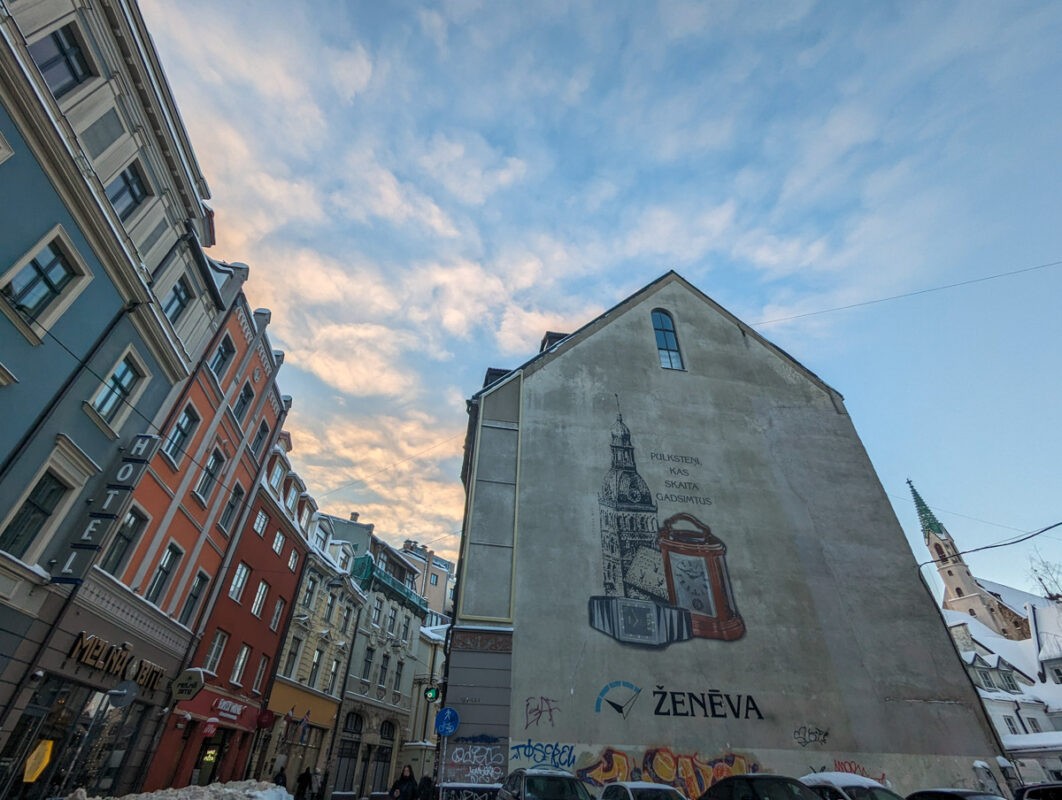Are you planning a trip to the Baltic countries and wondering is Riga expensive?
The Latvian capital of Riga is quickly gaining fame and prestige as one of the best places to visit in Europe for an alternative city break.
But, with the sudden boom in Riga’s tourism, many are wondering about the costs of travel in Riga.
Is Riga cheap or expensive? How much are the average hotels, food and activities there?
I recently spent two days in Riga to assess these costs and bring you an up-to-date analysis of how much money to take to Riga (figuratively, as nearly everywhere accepts card payments).
Let’s dive in!
This blog post may contain affiliate links.
Is Riga expensive? What I spent in two days
I’m going to go into everything below, but here’s a breakdown of all I spent in Riga in two days.
| Price (EUR) | Item |
| 123.68 | Two nights at the Wellton Riga Hotel and Spa |
| 5 | Museum of the Occupation of Latvia entrance |
| 7 | House of Black Heads entrance |
| 15 | Spa session at hotel (not included in room rate) |
| 10 | Tip for walking tour guide |
| 3.8 | Coffee and pastry for breakfast |
| 9.5 | Bagel and smoothie for lunch |
| 14 | Dumplings at Christmas market (two portions) |
| 4 | Glühwein at Christmas market |
| 14.5 | Breakfast with coffee |
| 5.3 | Coffee |
| 6.2 | Lunch at Lido buffet restuarant |
| 2.8 | Takeaway orange juice |
| 5 | Bagel |
| 12.18 | FlixBus from Vilnius |
| 26.97 | Sportland clothes |
A grand total of €264.93 over two days and two nights!
Cost of accommodation in Riga
In Riga, I stayed at the Wellton Riga Hotel and Spa. This four-star hotel cost me €55 per night – not too bad, although I did find the room to be a little dated and it smelt a bit musty!
That said, the room was spacious, with a sizable work desk, tea and coffee-making facilities, and a mini bar. The bed was firmer than I usually prefer, but not uncomfortable.
A major advantage of this hotel was its proximity to the bus station – just a 5-minute walk compared to a 15-minute drive in Vilnius. This made accessing Riga’s attractions, including the starting point of my walking tour, very convenient!
I was initially under the impression that the hotel’s spa was included in the room rate, but it turned out to be an additional €15 for a 2-hour session – which I tried, for research purposes of course! The jacuzzi not being as warm as I prefer and the spa was a little small, but it was a nice relaxing space.
Breakfast also wasn’t included in the room rate and would have cost me a whopping €18 – so I decided to go elsewhere!
The cheapest private room (that looked decent) I found in Riga, for an off-peak Tuesday in Febraury, was €36 for Hotel Saida, which is rated well and has contemporary rooms.
If you’re looking for affordable luxury, Pullman Riga Old Town is often the cheapest five star hotel in the city, with rates starting at around €90. Rooms are luxurious and contemporary, and there’s an indoor swimming pool and spa on site.
Cost of attractions and activities in Riga

Here’s what I spent on attractions and activities in Riga:
The Museum of the Occupation of Latvia cost €5. This museum serves as a solemn reminder of Latvia’s struggles under Soviet and Nazi occupation from 1940 to 1991. It’s a modern museum, with immersive exhibits that really paint a picture of the struggles during the time.
Then, I stepped into the House of Black Heads, with an entrance fee of €7. This beautifully restored building, originally established in the 14th century, was once the hub for Riga’s unmarried merchants, shipowners, and foreigners.
Today’s building is a remodel, although the dungeons – which are visitable – are original. It was a walk through time, where each corner revealed a piece of Riga’s wealthy past and its significance in the Hanseatic League.
I warmed up by visiting the spa at my hotel for €15. I did think that the spa was included, but was informed it was an extra cost when I checked in! Although the jacuzzi was cooler than my preferred temperature of at least 40C and the spa smaller than expected, it was still a relaxing affordable luxury!
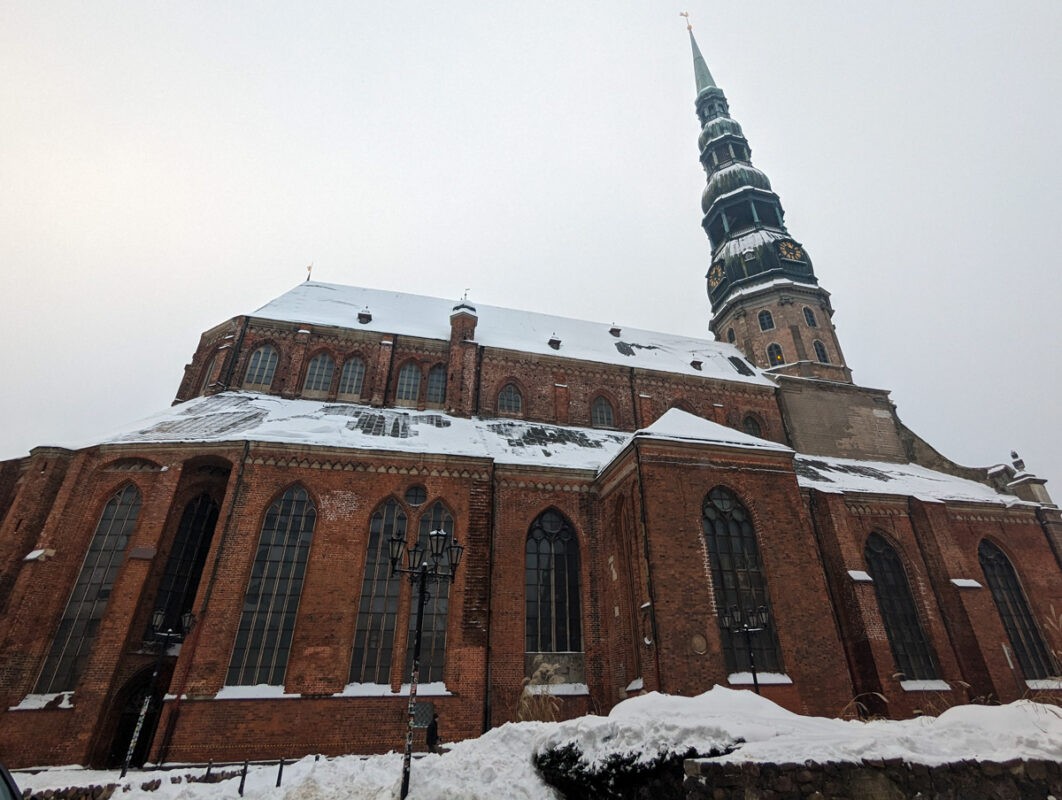
I also went on a walking tour around Riga’s highlights. This tour was free, but I tipped the guide €10 (tipping is expected, as this is how the guides make money).
But considering the wealth of information and hidden gems I discovered, I thought it was well worth the money! We visited places like The Dome Square and Cathedral, St. Peter’s Church, The The Swedish Gate, The Town Hall Square and Powder Tower and learned about their history.
I also walked around the city independently and saw the Freedom Monument and the Riga Nativity of Christ Orthodox Cathedral – which were both free. The Riga Christmas Market was also free of charge to enter and walk around, although of course food and drink set me back!
Likewise, the Riga Central Market (the largest market in Europe) was free to enter – I didn’t even purchase anything here so it was even cheaper!
On Get Your Guide, there are a few experiences that could be worth checking out if you have more time (and are there in the right season!). Here are a few tours I liked the look of and their costs:
- Husky Sledding or Wheel Cart Tour €90
- Central Market Latvian Food Tour €40
- The Hill of Crosses Private Guided Tour €97
- Private Boat Tour City Canal and Daugava River €20
- Half-Day Jurmala Tour €70
Is the Riga Pass worth purchasing?
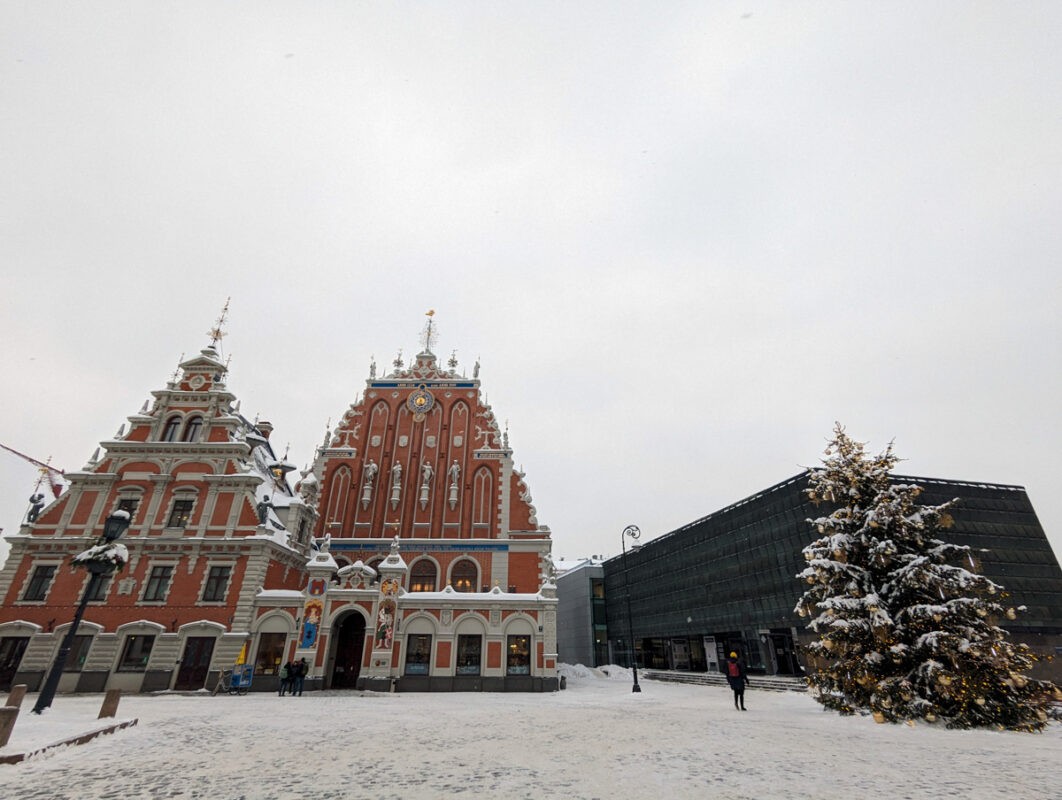
I researched the Riga Pass before visiting, but concluded it wasn’t worth it.
It required packing too much into two days; I decided to instead just pick a couple of museums and see other buildings from the outside.
A good option if you want to do a few more activities is to buy a two-day hop-on hop-off bus ticket, which includes a 50% discount on a canal and river trip. More information here.
This choice, coupled with free, tip-based walking tours, could be a more cost-effective way to see the city.
The Riga Pass might suit those looking to cram in numerous attractions in a short time, but for a more laid-back experience, I’d recommend going with these options.
However, if you’re interested in learning more about the Riga pass, click here.
Food in Riga

I didn’t spend huge amounts on food in Riga, but I ate everything/ at everywhere I wanted!
I started with an oat milk cappuccino paired with a cinnamon roll for €3.80, from Caffeine (my favourite coffee shop chain in the Baltics).
For lunch, I stopped by Big Bad Bagels and spent €9.50 on one of their vegan bagels and a banana and peanut butter smoothie.
Later, at the Christmas market, I indulged in dumplings, spending €14 on two servings of potato and cheese pelemi – they were so good, I had to go back for seconds!
The Christmas market also offered a chance to warm up with some Glühwein.
A standard yet very tasty Gluhwein cost me €4, and I couldn’t resist trying another version for €5, this time infused with gingerbread. The market had a variety of other drinks like mulled gin too.
For breakfast the second day, I went to “This Place Doesn’t Need a Name,” a cafe adorned in Christmas decorations, and spent €14.50 on pancakes and a coffee (which I bet was much better than the more expensive hotel breakfast!).
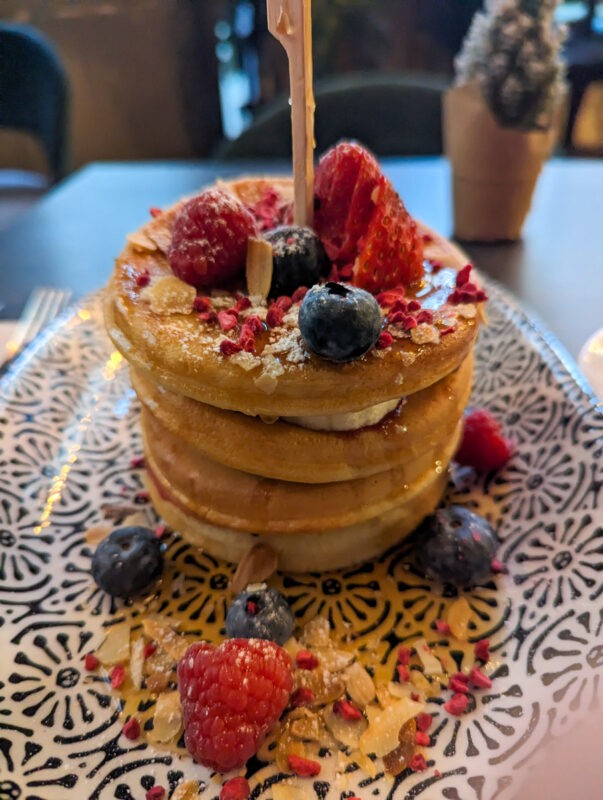
I also ended up spending €5.30 on a coffee at Crumble Cake, which seems quite pricey, although it was very good coffee!
I had a budget-friendly lunch at one of the Lido Restaurants. These are buffet restaurants serving Latvian food and there are a few of them in Riga (and in Tallinn).
For just €6.20, I had soup, potato cakes, and a portion of vegetables – which I thought was a steal for the quality and quantity.
I also paid €2.80 for a takeaway orange juice from Lido.
Before departing for Estonia, I grabbed another bagel from Big Bad Bagels for €5.
Cost of transport in Riga
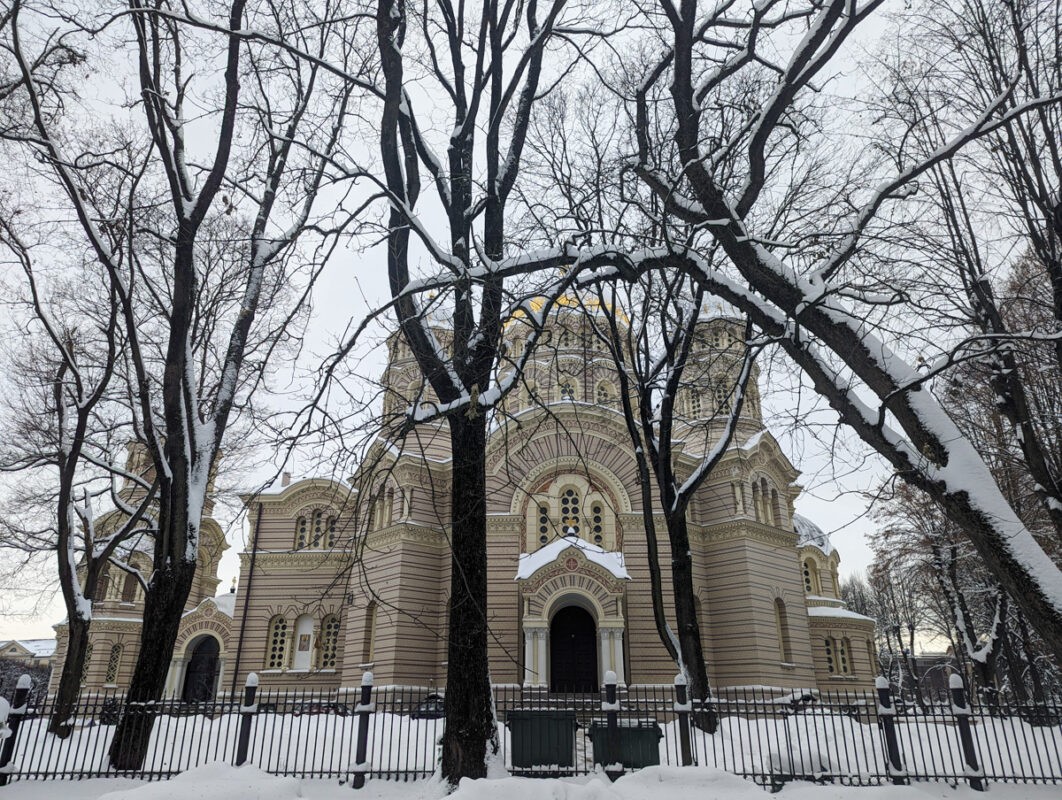
I didn’t spend much money on transport in Riga (I can’t say the same for Vilnius, as I was so far out of the city centre!).
But my FlixBus ride from Vilnius cost €12.18 for about a 4-hour trip, which I thought was a pretty good deal!
Once in Riga, I found that its compact and pedestrian-friendly layout made walking the best option to explore. It also helped that I was staying right in the city centre!
So I didn’t find the need to use public transport, although it’s worth noting that tickets are reasonably priced at €1.50 per ride for those who prefer it.
Similarly, I didn’t use Bolt taxis in Riga.
Based on my experience in Tallinn and Vilnius, where Bolt rides for 10-15 minute journeys ranged between €3.5 and €5.5, I assume Riga’s rates would be comparable.
After Riga, I travelled to Tallinn which cost €10.44 for about a 5-hour trip – even cheaper than my Vilnius to Riga journey!
Extra expenses in Riga
A random side note: I forgot to pack a swimsuit for the spa, so went to the sports shop Sportland, where I found a pair of sports shorts for €26.97, which I wore with my sports bra.
This was an unexpected extra expense – although I’ll use the shorts again – but did remind me never to stress too much about forgetting things when packing, as it’s usually easy to pick items up on the road!
How much is a pint of beer in Riga?
A pint of beer in Riga typically costs between €2 and €4, depending on the establishment and the type of beer. Pubs and bars away from tourist hotspots tend to offer lower prices.
How much is a meal out in Riga?
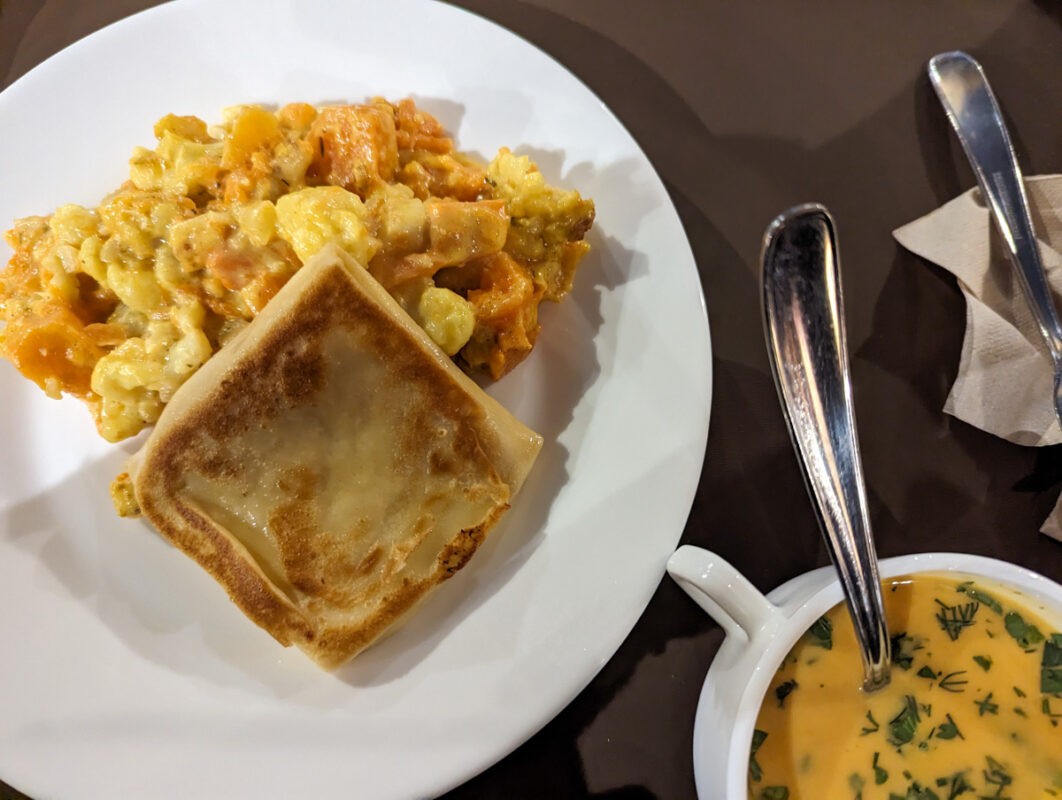
A meal in a mid-range restaurant in Riga can cost between €7 and €15 per person. Prices vary based on the type of cuisine and the restaurant’s location, with tourist areas generally being pricier.
FAQs about the cost of travel in Riga
Here are some answers to frequently asked questions about the prices in Riga.
Is Latvia cheap or expensive?
Latvia, overall, is moderately priced. It’s cheaper compared to Western European countries but can be slightly more expensive than some Eastern European nations. Costs vary based on location and lifestyle choices.
How expensive is food and drink in Latvia?
Food and drink in Latvia are reasonably priced. A meal at an inexpensive restaurant may cost around €7, while a three-course meal at a mid-range restaurant might be about €20-€30. Drink prices are also moderate.
Should I take cash to Riga?
Everywhere apart from the walking tour accepted credit cards in Riga; I only took some cash out once to tip the walking tour guide. Even if you like to have some cash, you don’t need to take any euros to Riga with you – ATMs are readily available.
Is Riga cheap for shopping?
Riga has a mix of shopping experiences, from affordable local markets to more expensive designer stores. Generally, shopping in Riga can be budget-friendly, especially for local goods and souvenirs.
Is Riga or Vilnius more expensive?
Riga and Vilnius are quite comparable in terms of expenses, but generally, Riga can be slightly more expensive, especially in tourist-centric areas. However, the difference is not significant.
Is Riga or Tallinn more expensive?
Tallinn tends to be a bit more expensive than Riga, especially in terms of dining and accommodation. However, the cost difference is not overly substantial and can vary depending on personal spending habits.
How much is a coffee in Riga?
The price of a coffee in Riga typically ranges from €1.50 to €3. Speciality coffees at upscale cafes may cost a bit more, while simpler coffee options are on the lower end of the price spectrum. Of course, then there was my extortionate coffee at Crumble Cake – I’m still not sure how it cost me so much!
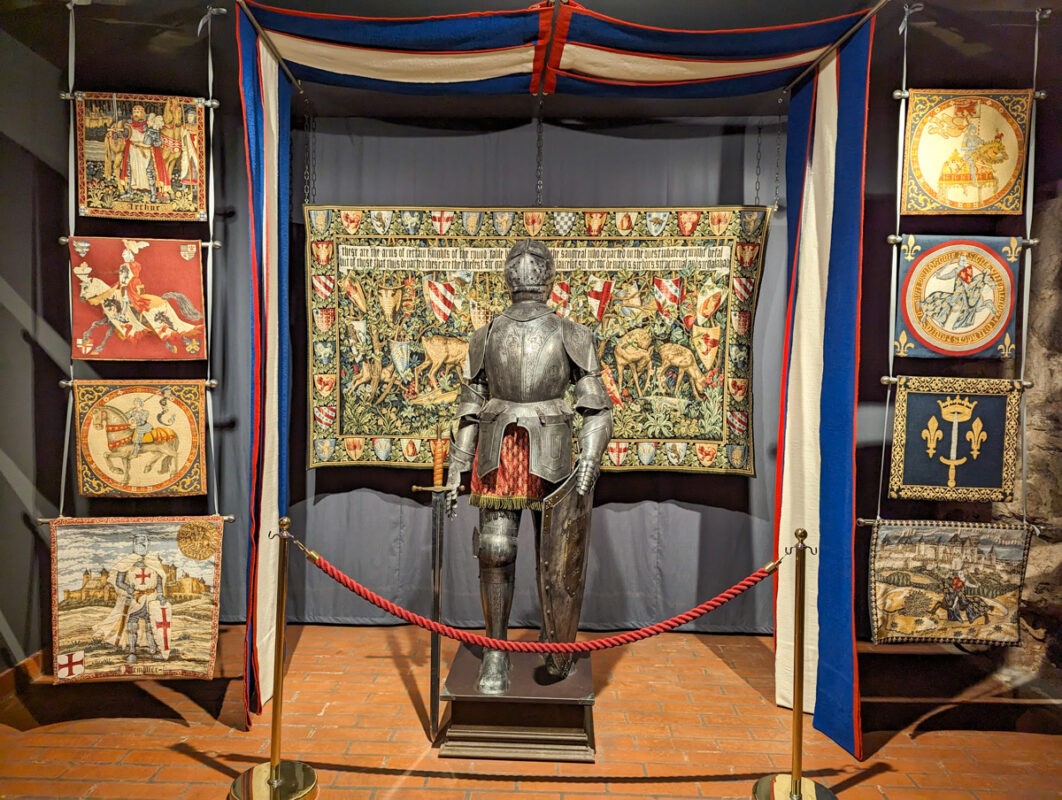
So, is Riga cheap or expensive?
I thought Riga was fairly affordable – much more so than many other cities in Europe – but it has definitely risen in costs since my partner visited in 2016.
If you’re planning a trip to Riga, don’t miss my is Riga worth visiting blog post to see some of my top things to visit (and things to consider!). Also, check out my YouTube video about Riga!

